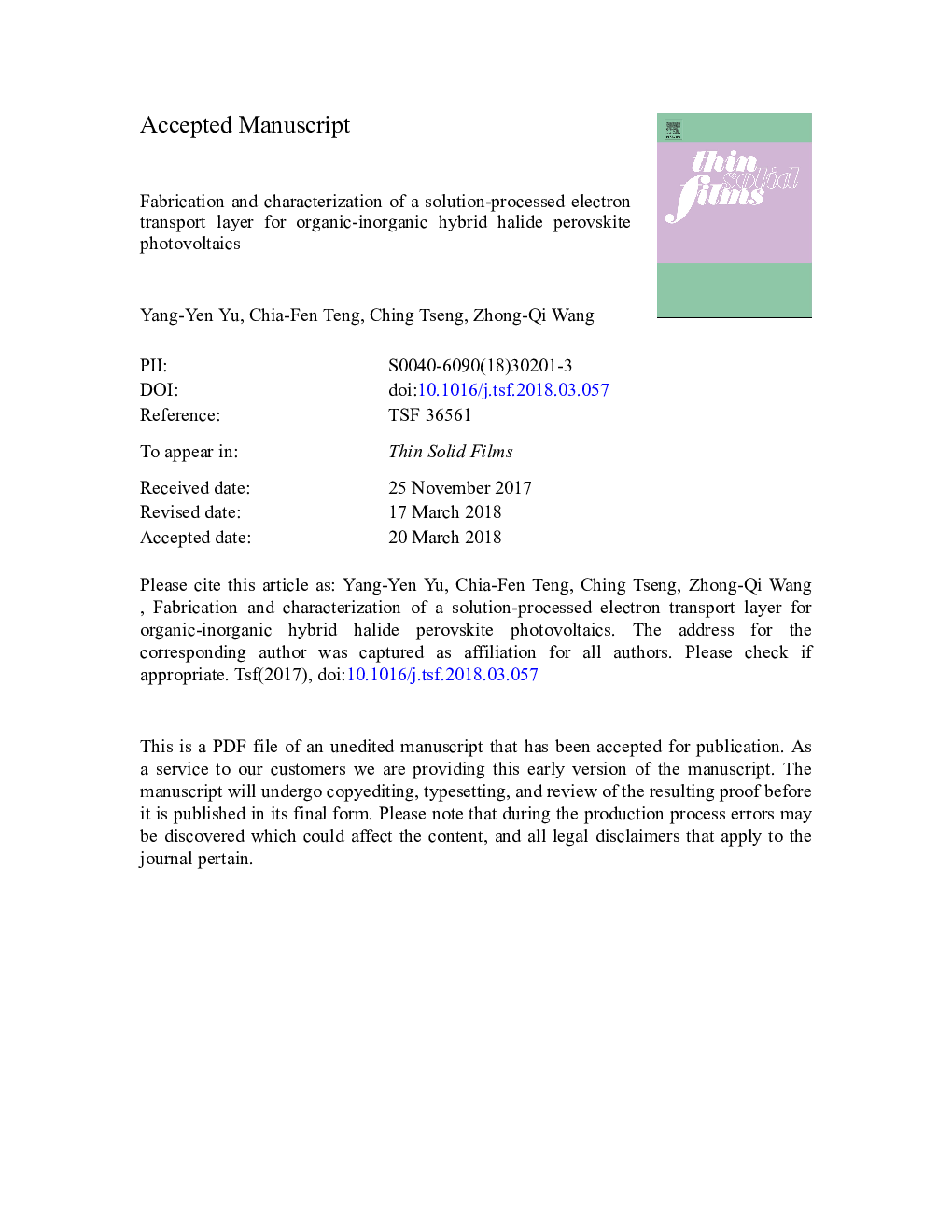| Article ID | Journal | Published Year | Pages | File Type |
|---|---|---|---|---|
| 8032530 | Thin Solid Films | 2018 | 28 Pages |
Abstract
In this study, suspended zinc oxide nanoparticles were used as the electron transport layer in trans-perovskite solar cells. The perovskite film was prepared by a liquid two-step method, and the crystallinity, surface morphology, and optical and photoelectric properties of the perovskite films were then investigated. The results showed that the crystallinity and film compactness of the perovskite could be controlled by the stoichiometric quantity and the perovskite formation rate. Moreover, the film morphology was affected by the annealing temperature, duration, and the amount of toluene solvent, which could be leveraged to enhance the efficiency of the device due to the charge trapping defect. The optimal annealing temperature and duration were 80â¯Â°C and 10â¯min, and the optimal volume ratio of isopropyl alcohol to toluene was 9:1. The highest performing perovskite solar cells in this study exhibited an energy conversion efficiency of 15.78%, a short-circuit current of 20.80â¯mA/cm2, an open circuit voltage of 1.10â¯V, and a fill factor of 0.69.
Related Topics
Physical Sciences and Engineering
Materials Science
Nanotechnology
Authors
Yang-Yen Yu, Chia-Fen Teng, Ching Tseng, Zhong-Qi Wang,
